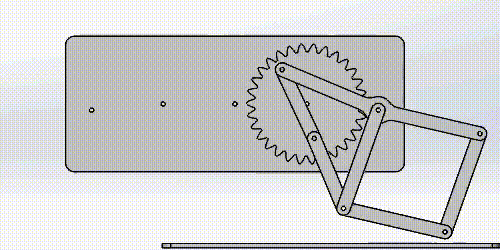Twitch is a small RC vehicle. I built is as a study in an unusual drive train, and also as a very expensive toy. The vehicle is quite close to a clone of Shane Colton’s project Twitch Jr., which itself was inspired by a FIRST Robotics team’s bot Twitch. So I guess that makes mine the third generation.
So, beyond being a box with four wheels that moves, what is Twitch? Two critical features make this thing fun to drive: 1) Omniwheels, allowing the wheels to slide sideways without skidding, 2) A motor and wheel configuration that allows the wheel direction to swing from front-to-back to side-to-side. The black boxes in the animation below are high-torque servos that drive the pivoting of the wheel and motor assemblies
